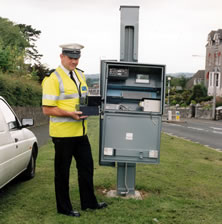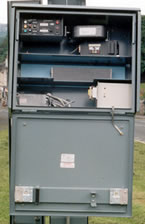Gatso Fixed Safety Cameras
Jun 28 2022 The Gatsometer radar speed camera system, as approved by the Home Office for use in the UK, is based on a continuous wave (cw) radar where the rate of change of distance between the radar and its target is obtained from the change in frequency of the returned signal. This change in frequency is known as the Doppler effect.
The Gatsometer radar speed camera system, as approved by the Home Office for use in the UK, is based on a continuous wave (cw) radar where the rate of change of distance between the radar and its target is obtained from the change in frequency of the returned signal. This change in frequency is known as the Doppler effect.
The beam from the Gatsometer Type 24 radar has a width of 5 degrees that is directed across the path of traffic at an angle of 20 degrees with respect to the kerb. The field of view of the camera includes the area of the radar beam. The frequency of the radar is 24.110 GHz and the change in frequency that results from a moving vehicle passing through the beam is 67.75 Hz per mph of the vehicle.
As a vehicle enters the beam, Doppler shifted returns are received. When 3 consecutive speed measurements have been made, that exceed 20 Km/h and are within ±1 km/h, then the system begins to build a speed histogram. Speed measurements end when a Doppler signal has not been received for 20 milliseconds i.e. the vehicle has left the beam. The total number of speed measurements made by the system depends on the length of the vehicle. For a saloon car this is typically 400 to 500.
 If the system determines that an offence has been committed, as defined by the vehicle exceeding a pre-set speed threshold, a photograph sequence is initiated that comprises of two photographs taken at a pre-set time interval. The radar speed measurement is given in the data blocks superimposed on the photographs during the film at the time of the offence.
If the system determines that an offence has been committed, as defined by the vehicle exceeding a pre-set speed threshold, a photograph sequence is initiated that comprises of two photographs taken at a pre-set time interval. The radar speed measurement is given in the data blocks superimposed on the photographs during the film at the time of the offence.
Together, the two photographs provide the secondary evidence of a vehicle’s speed. The distance travelled during the time interval is estimated from road markings at a known spacing. The secondary speed measurement then becomes a matter of distance/time which must be within 10% of the primary evidence. The time interval between photographs, typically 0.5 to 0.7 seconds, is derived from a timing source that is standalone. Therefore the resulting speed estimate is independent of that measured by the radar.